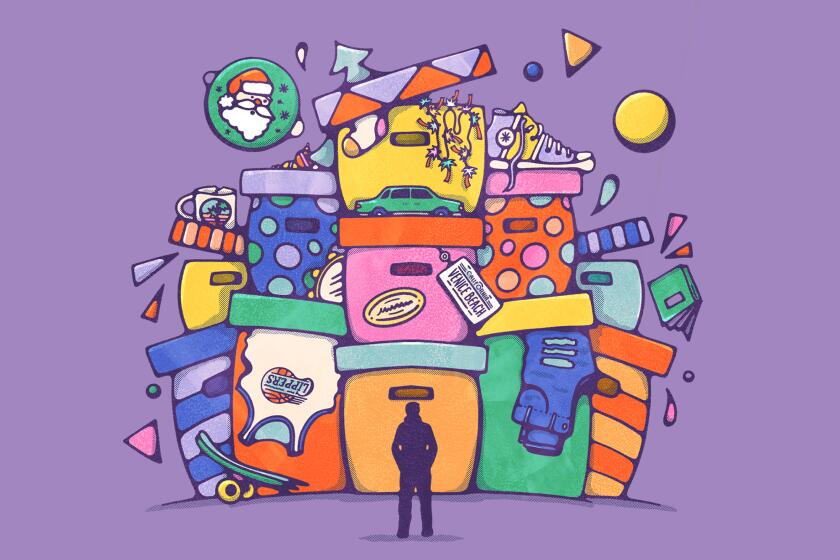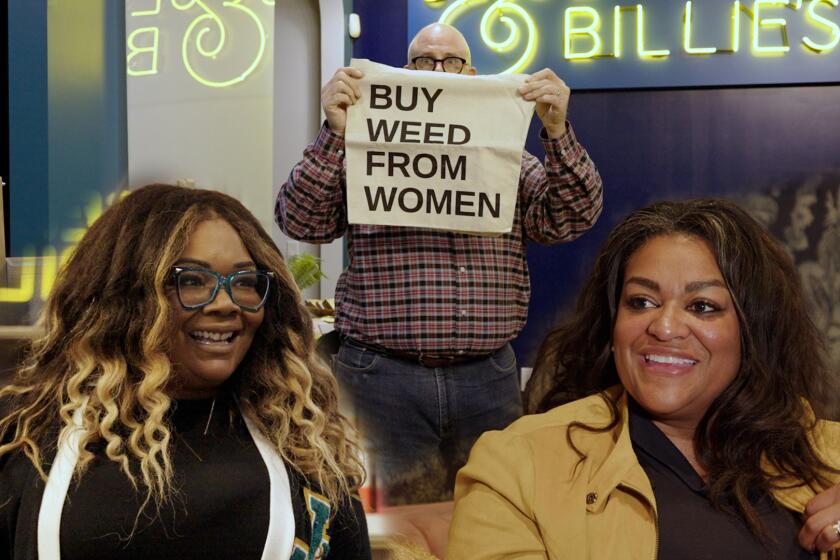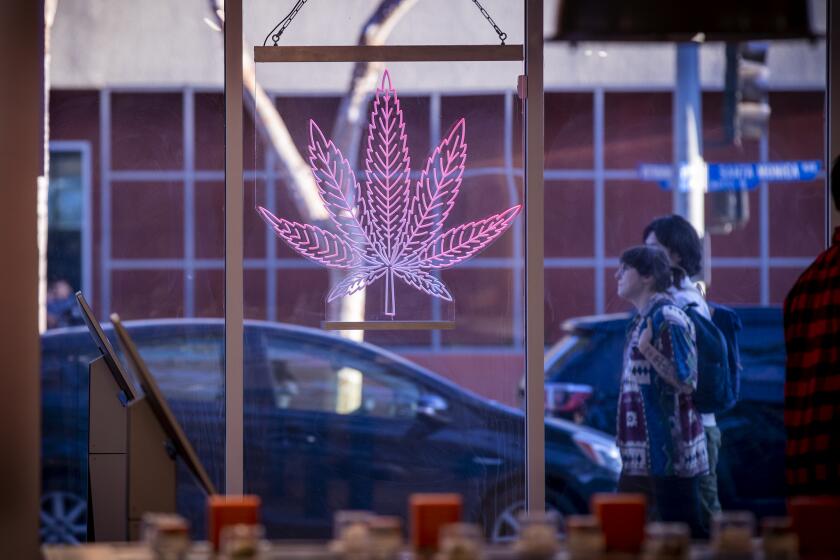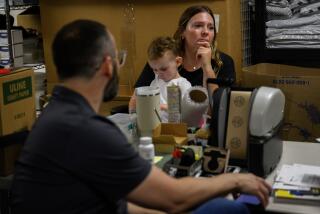Luxe lounges, more stores: The 5 trends that will shape L.A.’s cannabis scene in 2022

What does L.A.’s cannabis landscape look like in 2022? What trends and factors will shape the look and feel of the local weed scene?
While there are about as many opinions as there are places to legally buy a bag of bud in L.A. County, a recent survey of five industry insiders found five themes coming up over and over again when I asked them to forecast what would radically alter (or, in the case of federal prohibition, not alter) the way cannabis and consumers interact.
For the record:
1:12 p.m. Jan. 13, 2022In an earlier version of this article, a quote from Weedmaps’ Chief Executive Chris Beals about cannabis retail expansion into independent L.A. County cities was misattributed to The Parent Company’s Chief Executive Troy Datcher.
Consolidation is coming
Expect the flurry of mergers and acquisitions that defined the cannabis space last year to continue — if not accelerate — in 2022, especially at the individual dispensary level.
Pair a little pot with these activities to see the city through new (if bloodshot) eyes.
“I really think that the small [retail] operators have just been kind of holding on for dear life,” said Rama Mayo, the co-founder of a downtown L.A. cannabis-business hub called Green Street and the Hall of Flowers trade show. “Their retail valuation is low, there are the costs associated with a bricks-and-mortar space, and I think we’re going to see M&A among the big guys, which will lead to smaller operators doing the same thing. Cultivation will merge with distribution, which will merge with a brand house, or three single dispensaries will band together under one banner.”
Mayo said he sees a future where cannabis retail looks very different.
“Maybe not this year, but in a couple of years,” he said, “there will be three options to buy weed: a BevMo! kind of situation, like a MedMen or a Planet 13 — a big-ass spot that has a million things in it; the convenience [store] option, like a 7-Eleven on every corner; and the stand-alone companies that don’t partner with anybody, which will be like bodegas or the mom and pop shops — one-off places.”
Troy Datcher, chief executive of San Jose-based, vertically integrated cannabis power player The Parent Company, also puts M&A at the top of his 2022 trend list.
Because cannabis is illegal at the federal level, traditional banking services aren’t a viable option for dispensaries.
We all know L.A. is the land of reinvention, but the first step to a new you is getting rid of the old by decluttering your home, your closet and even your ride.
“I think there’s going to be further consolidation, just because there’s not access to banking,” he said. “I think there are a lot of folks who were skating on the edge with not a lot of capital reserves and without access to capital, so I think we’re going to see more people actually finding themselves not in the industry a year from now. That’s a huge challenge, especially for the smaller organizations with one or two dispensaries.”
And so is ... expansion
While there may be fewer companies in the local marijuana market in the year(s) ahead, some think 2022 will mark a SoCal expansion, with dispensaries increasing in number andexpanding into new cities.
“The city of Los Angeles may have legalized cannabis, but there’s just not enough cannabis retailers there,” said Chris Beals, chief executive of Irvine-based cannabis e-commerce platform Weedmaps. “And I think this year — knock on wood — we’ll actually see an increase in the number of cannabis retailers, which I think should help bring down prices, drive access and help with convenience.”
There are 254 legal dispensaries in Los Angeles County, according to the state’s Department of Cannabis Control database.
Beals said that the number per capita — one legal retail storefront for every 39,370 people — isn’t high enough to curtail the illegal cannabis market.
If more legal dispensaries move in, they could start to crowd out illegal ones.
“The inflection point we found was that at roughly about one [dispensary] per 10,000 [people], you can end up in a place where the legal market could really carve out and start to gain market share against the illicit market,” he said.
What if Josephine Baker and Billie Holiday opened a SoCal dispensary? Wonder no more.
While The Parent Company’s Datcher agrees with Beals’ assessment that there are too few dispensaries per capita in L.A. County, he’s less sanguine about the 2022 landscape. “I think there will be fewer dispensaries,” Datcher said. “Because people just won’t make it.”
But Beals also thinks that some of the cities across the Southland that have so far been reluctant to allow retail cannabis sales will reconsider.
“Angelenos sometimes tend to forget that L.A. County is a very big place, and there are some places — especially when you head further east, south or up into the mountains — where cannabis access is still pretty spartan. So, hopefully, we’ll start to see some more of the independent cities realize that all they’re doing is fostering the illicit market by not actually [allowing] dispensaries in.”
Ebony Andersen, chief operating officer of both Exposition Park dispensary Josephine & Billie’s and local cannabis cultivator Ball Family Farms, agrees. “I think ... some cities that were apprehensive at first about cannabis and let some of the bigger cities do it will start to allow retail,” she said.
There will be an emphasis on the experiential
Andersen is among the industry insiders who think the next year will see the experiential side of cannabis commerce take center stage.
“I think one [trend] we’re going to see next year — and possibly years to come — is the cannabis experience,” she said. “I think we’re going to start seeing more entertainment factors folding in cannabis, we’re going to see more Josephine & Billie’s-type entertainment-meets-cannabis experiences in the industry … [and consumption] lounges, I think, are going to be a hot topic in 2022.”
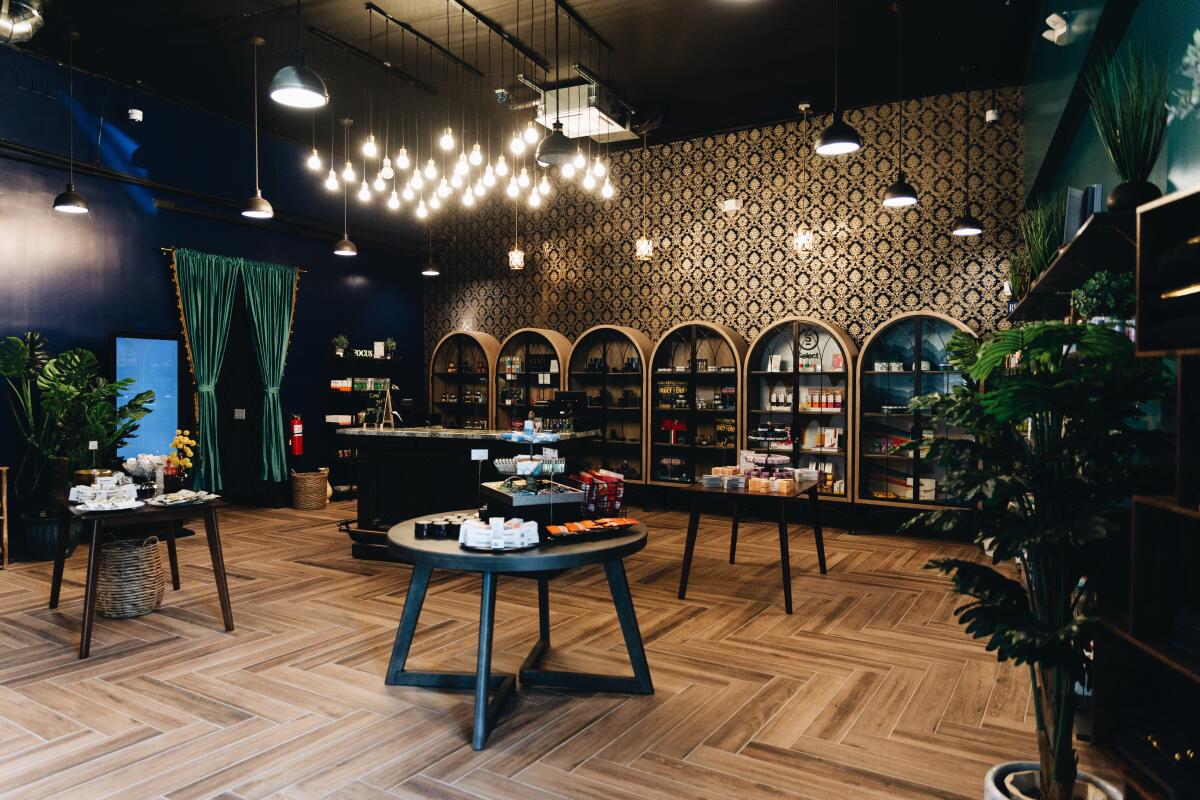
While part of that has to do with the communal aspect of cannabis consumption, Andersen said equity is also at play.
“When it comes to wellness, we’re talking about folks who live in public housing or apartments that strictly prohibit cannabis use. Where are those people able to get access to medicine like cannabis? So I think we’re going to see a lot of consumption lounges, and I think cities are going to start framing it in the context of accessibility.”
Tracy Anderson, co-founder of L.A.-based cannabis brand Pure Beauty, said he’s eager — from both a personal and brand-building point of view — to put pandemic-induced isolation in the rearview mirror.
“We can’t wait to get back into live, physical programming. We’ve been missing that so much. In the fall, when there was a bit of a reprieve [from COVID-19], we did an art show, and that was fantastic to actually see people in person and really get out there. Whether it’s a party or some other kind of experience, actually live and in-person is really important. Cannabis is a very communal thing, so getting back to that is something we really hope to see more of.”
With celebrity backing, West Hollywood is making a new cannabis push with pot shops of all varieties and an international rebrand as Emerald Village.
Green Street’s Mayo is so bullish on the prospect of weed-focused gatherings that he’s pulled the trigger on plans to bring a festival-style event — complete with entertainment, food and on-site cannabis sales and consumption — to DTLA on May 13 and 14. “People will be coming out of [the pandemic] isolation and wanting to go out,” Mayo said. “It’s the whole Roaring ’20s thing. I know we’ve heard it for the last year, but I do believe there’s going to be that real desire to go out.”
Mayo envisions eventually growing it into a 60,000-capacity cannabis festival. “I absolutely think there could be entire brands that only exist at [these kinds] of events,” he said about the future of canna-branding.
He also points to the handful of on-site consumption lounges aiming to open in West Hollywood this year (also cited by Weedmaps’ Beals as a 2022 game-changer). “There’s something like eight or nine getting ready to open around the same time, and they’re beautiful — they’re spending millions and millions of dollars on building them. I predict that they will have a really big [impact], both attendance-wise and on on-premises sales, absolutely.”
Brand-building will be key
Over the next 12 months, expect to see brand-building efforts ramp up.
“I think people are recognizing the importance of brand recognition more than ever,” said Pure Beauty’s Anderson. “There’s so much product on the shelf and so little place for it to go. If you can’t break through to the consumer in some way — really connect — it’s going to be really tough. You need to brand.”
Datcher also points to the increasing importance of branding in the cannabis space.
“People want brands that deliver consistency, that you can count on, that are predictable and safe. I think that brand relationship is going to be a huge difference-maker in this industry — especially when it comes to [highlighting] the differences between the [legal and the] illicit markets.”
And absolutely nothing will happen at the federal level
Although 2021 saw the number of states legalizing recreational cannabis use grow (it’s now 18, plus the District of Columbia), no one I asked to forecast the year ahead thinks cannabis will be legal at the federal level by this time next year.
“The current slate of bills just didn’t really stand a chance,” said Weedmaps’ Beals. “I think they were good for PR and press but not so good in terms of the probability of success.”
“We’re not thinking about that being the savior for industry in the next 12 months,” said The Parent Company’s Datcher. “Some of the support from both [political] parties has been promising, but we’re not banking on it happening.”
“Zero percent chance,” said Josephine & Billie’s Andersen. “I do not see it happening now. And I don’t see it happening in the near future.”
“My prediction is that whoever wants to win the presidency [in 2024] is going to have to bring this [topic] up,” said Green Street’s Mayo.
“At the 2022 midterms, maybe we’ll see a little bit of talk,” said Pure Beauty’s Anderson. “But I think that’s all it’s going to be.”
More to Read
Sign up for The Wild
We’ll help you find the best places to hike, bike and run, as well as the perfect silent spots for meditation and yoga.
You may occasionally receive promotional content from the Los Angeles Times.


